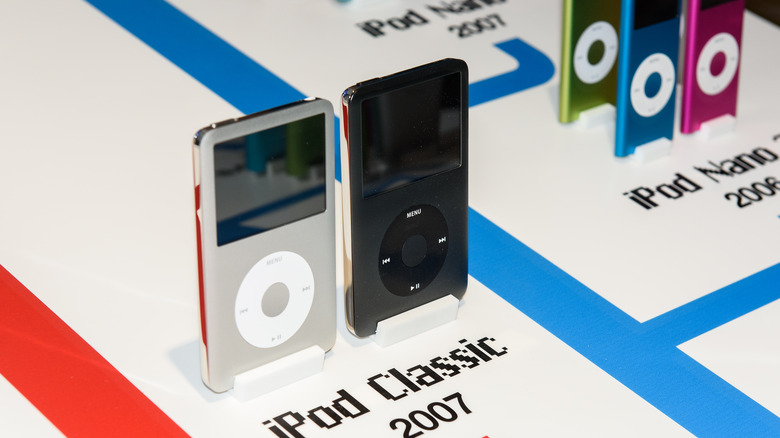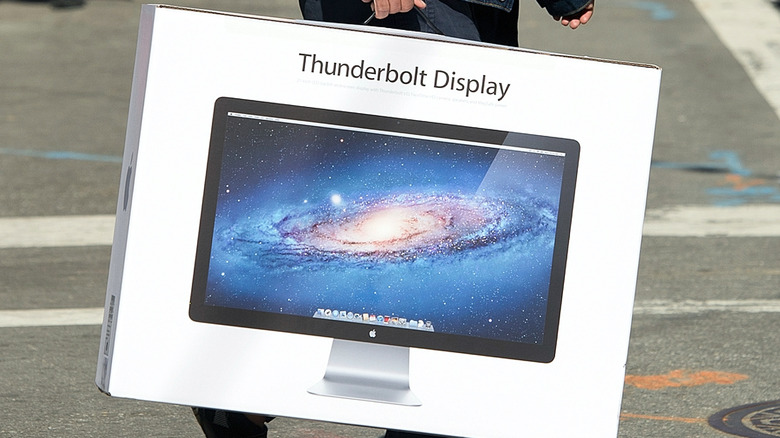5 Products Apple Should Have Never Discontinued
Known for its innovative technology and sleek design, Apple has a rich history of introducing groundbreaking products that have revolutionized the tech industry. While the company continuously strives to push boundaries and shape the future of technology, there have been instances where they discontinued certain products that left a lasting impact on users and sparked a sense of nostalgia among fans.
Apple's decisions to stop making or updating products are often based on business strategy and innovation, but users who love the unique features and functions of these devices are affected by these decisions. The loss of these products has sparked discussions among tech enthusiasts who often express their desire for these beloved devices to return. Some of these products had the potential to be much better if they weren't discontinued, and given the love they deserved.
We will explore the sentiments surrounding some of these discontinued Apple products and delve into the reasons why they hold a special place in the hearts of users — from iconic devices that defined the early 2000s, to niche accessories and software that enhanced the user experience.
The iPod
The iPod, Apple's iconic portable music player, holds a significant place in the company's history. Unfortunately, Apple announced in 2022 that it was discontinued. The iPod lineup underwent various transformations, starting from the pocket-sized iPod Classic with a click wheel, and concluding with the iPod Touch.
The rise of smartphones — particularly the iPhone, with its enhanced functionalities and integrated music capabilities — contributed to the decline in demand for standalone portable music players like the iPod. Despite its discontinuation, there are compelling reasons why the iPod should have stuck around.
It provided a dedicated music experience that catered specifically to music enthusiasts. Its iconic design, featuring the click wheel and sleek aesthetics, made it a highly desirable and user-friendly device. The iPod allowed users to carry thousands of songs in a compact device, providing unparalleled freedom and convenience. It really did revolutionize music portability and consumption, setting the stage for the digital music era — but many would want it back just for the looks and design.
Besides allowing users to carry extensive music libraries with them, the iPod's significant storage capacity appealed to individuals who preferred to own their music, as well as provided offline access to their favorite tracks during a time when smartphones weren't as prevalent. Integrating music functionalities into data-powered smartphones, and the rise of music streaming services, may have rendered large storage capacities less relevant for some users. However, the iPod remained valuable for some audiophiles, especially for others in areas with limited internet access.
Aperture
Aperture, Apple's old professional photo editing software, was popular among photographers for its robust features and user-friendly interface. Released as an alternative to iPhoto, Aperture provided photographers with a range of powerful tools for organizing and editing images, making it a preferred option for professional users.
Alas, it was also discontinued by Apple, leaving many users disappointed. The decision to discontinue Aperture was announced by Apple in 2014 — Apple cited the introduction of a simpler photo management app, Apple Photos, as the reason behind this move.
Aperture boasted several notable features that made it a favorite among photographers: It offered non-destructive editing, allowing users to make adjustments to their images without altering the original files. The software included advanced organization tools, such as keyword-based tagging and facial recognition, making it easier to manage large collections of photos. Aperture also supported importing and exporting raw image formats, provided lens correction capabilities, and offered customizable printing and publishing options.
Despite the discontinuation, many photographers believe Apple should not have abandoned Aperture. One of the main reasons is the loss of advanced editing capabilities. Aperture provided features like the loupe, highlight/shadow clipping display, and the ability to brush adjustments, which were not fully replicated in Apple Photos or other alternatives like Adobe Lightroom. Additionally, Aperture's all-in-one window and user-friendly interface were highly praised by users, providing a seamless editing experience.
AirPort Extreme and Time Capsule
Apple's AirPort Extreme and Time Capsule were popular networking products that offered convenient and reliable wireless connectivity and data backup capabilities. The discontinuation of AirPort Extreme and Time Capsule can be attributed to several factors.
These products had not received updates for several years, and Apple seemed to be shifting its focus away from the networking hardware business. Apple also partnered with third-party router manufacturers, such as Linksys Velop, to offer networking solutions to its customers instead.
Despite the discontinuation, AirPort Extreme and Time Capsule offered several notable features. AirPort Extreme provided fast and reliable Wi-Fi connectivity, including support for the latest wireless standards. It featured a sleek design, multiple ports for wired connections, and easy setup using Apple's AirPort Utility software. On the other hand, Time Capsule combined a high-performance router with a built-in hard drive for seamless wireless backups using Apple's Time Machine feature.
One reason why AirPort Extreme and Time Capsule should have never been discontinued is their integration with Apple's ecosystem. These products were designed to work seamlessly with Macs, iPhones, and other Apple devices, providing a cohesive and user-friendly networking experience. The combination of reliable Wi-Fi, easy backups, and integration with Apple's software and services made AirPort Extreme and Time Capsule highly convenient for Apple users.
Thunderbolt Display
The Thunderbolt Display featured a 27-inch TFT LCD with IPS technology, and a resolution of 2560x1440 pixels in a 16:9 aspect ratio. It offered a wide viewing angle, high brightness, and a contrast ratio, resulting in vivid and detailed visuals. The display also included a FaceTime HD camera and a 2.1 speaker system, providing users with the convenience of video calls and enhanced audio.
One of the standout features of the Thunderbolt Display was its extensive connectivity options. It came equipped with Thunderbolt and Universal MagSafe cables and ports for USB 2.0, FireWire 800, Gigabit Ethernet, and additional Thunderbolt devices. This allowed users to connect various peripherals and expand their setup without additional adapters or hubs.
The Thunderbolt Display was designed to seamlessly integrate with Thunderbolt-enabled Mac computers, providing users with a unified and efficient workflow. Its compatibility with MacBook Air, MacBook Pro, iMac, and Mac mini made it a versatile choice for a wide range of users.
Despite its notable features and popularity among Apple users, the Thunderbolt Display was discontinued without a direct successor or explanation from Apple. This decision left users searching for suitable alternatives that offer similar features and seamless integration within the Apple ecosystem. While third-party Thunderbolt and USB-C monitors are available, the Thunderbolt Display's unique integration and features make it challenging to replace entirely for those seeking a seamless Apple experience.
iWeb
iWeb was a website creation software released in 2006 as part of the iLife '06 suite. It offered users a convenient way to create and customize websites and blogs without the need for coding skills. iWeb provided a range of Apple-designed themes, allowing users to personalize their sites with different fonts, colors, and layouts. The software integrated seamlessly with other applications in the iLife suite, providing easy access to media content from iTunes, iMovie, and iPhoto through the iLife Media Browser.
One of iWeb's notable features was its support for various interactive widgets. Users could embed YouTube videos, Google Maps, countdown timers, and RSS feeds into their websites to enhance functionality and engagement. iWeb also facilitated website publishing through the now-discontinued MobileMe service and other hosting services via FTP. Additionally, iWeb allows integration with popular platforms like Facebook, YouTube, AdSense, and Google Maps, enabling users to incorporate social media and monetization features into their websites.
Despite its initial popularity, Apple discontinued iWeb in 2011, with the final release being version 3.0.4. Although iWeb has been discontinued, it still functions, and users can host their iWeb pages with the help of hosting companies. However, considering the lack of support and the availability of alternative tools, it is recommended that users transition to newer software. If iWeb had not been discontinued and had received regular updates, macOS users would now have one of the best website creation software out there.





